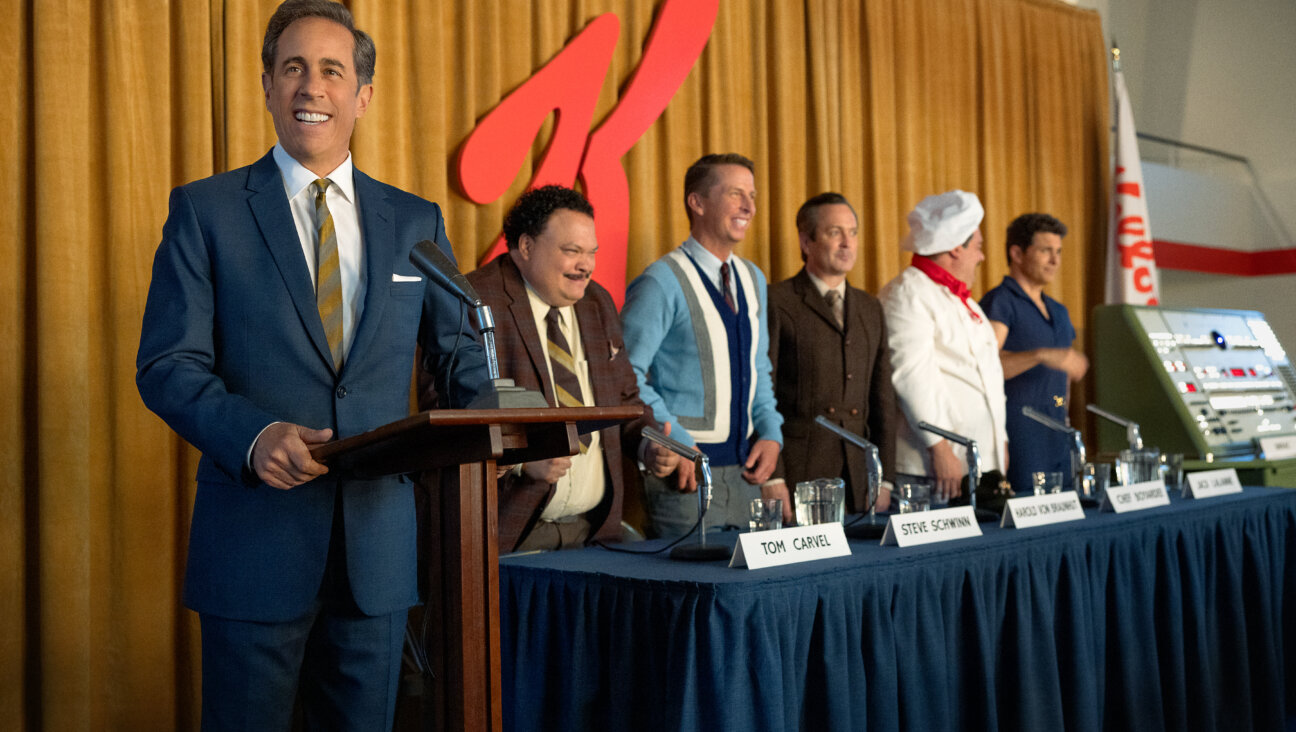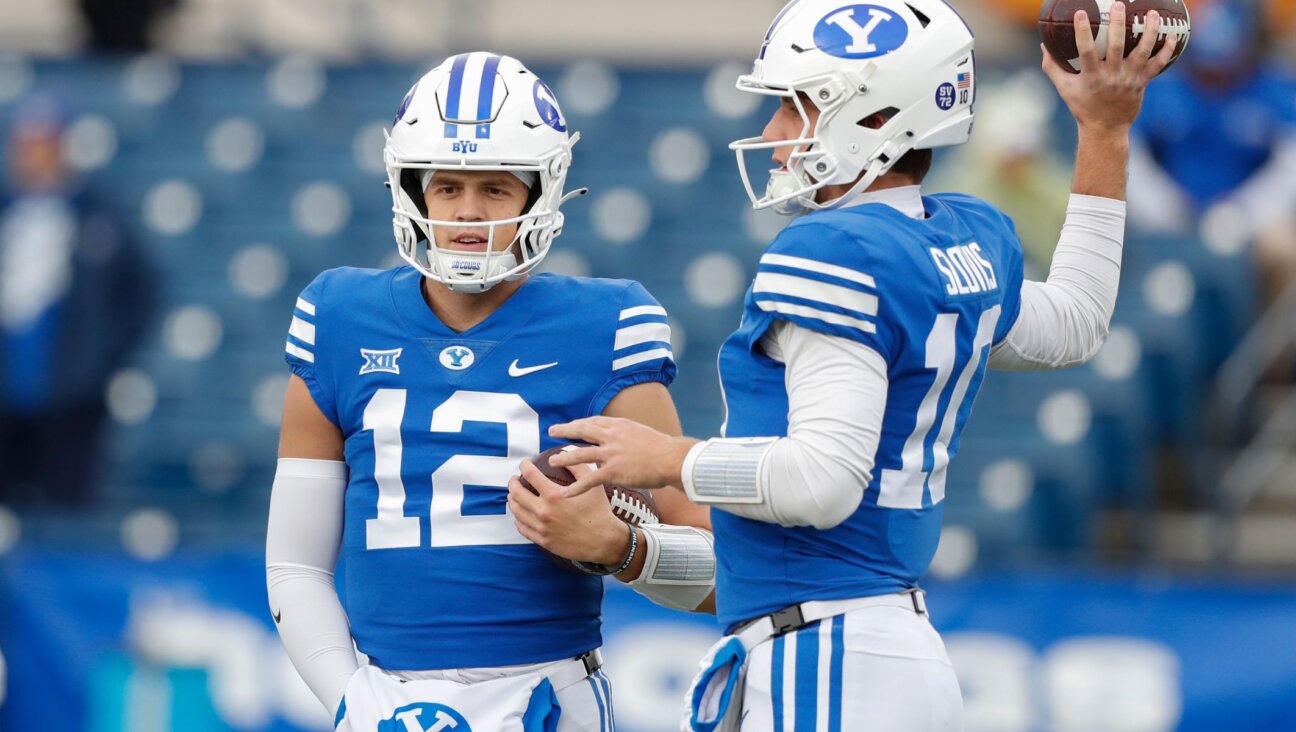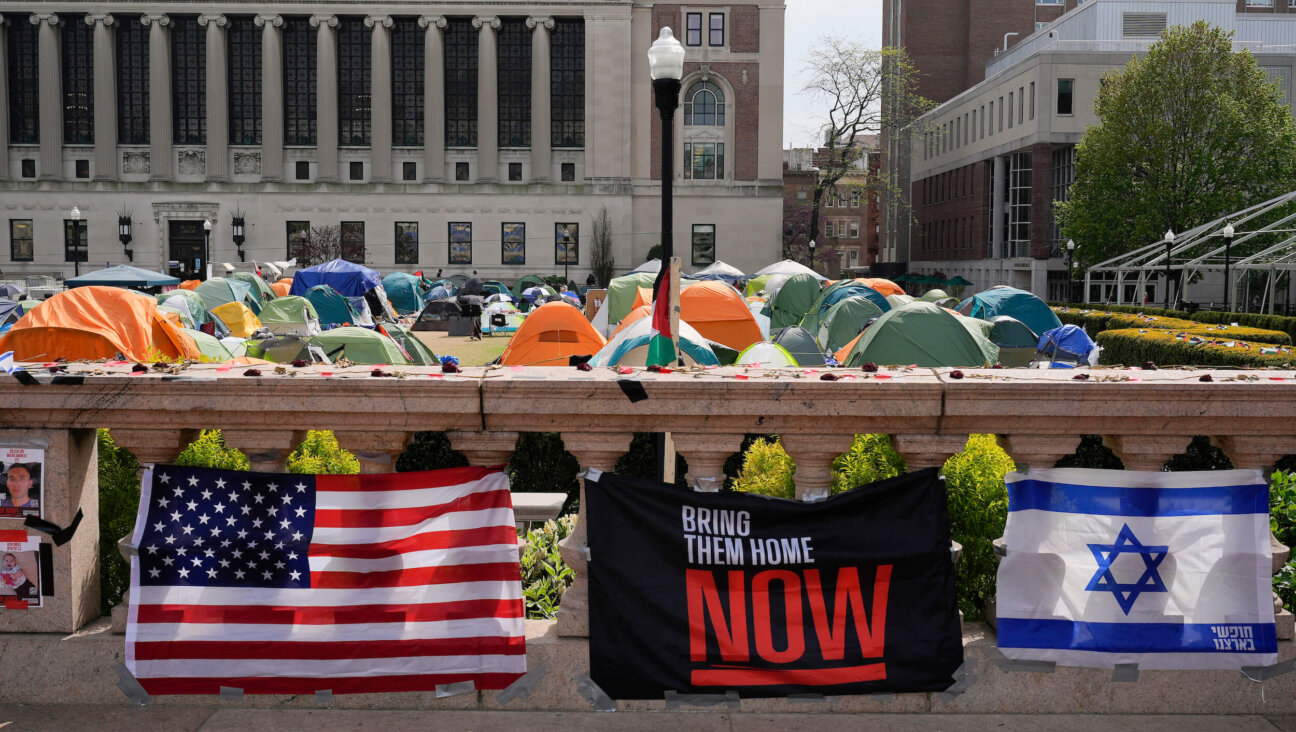That time I painted Saul Bellow

Image by Courtesy of Sarah Yuster
There is that moment, when you’ve said or done something that possibly you will regret, but can’t be certain. Such were the seconds which followed the thin metallic thump of my envelope addressed to Saul Bellow as it briefly slid and fell to the bottom of my neighborhood mailbox. Years of musing about this letter culminated in writing it after reading an article in The New Yorker containing casual snippets of conversation with this writer whose work had become an integral part of my private self identification. How much would change, I agonized, if there was no response at all. There might be a slightly acrid pall whenever I read his books, which until now had offered me an embattled peace. If you’ve read Bellow, then you know his pulse is not tranquil, but I found an affirming familiarity in the rhythms and layers.
Bellow’s narratives work through a lens that transports a reader from aerial views to molecular ones. Events are noted through vacillating long and short focus with sporadic chronology reverses which must be followed as if you’re being paid to tail him. It’s said that his best novels embody the 20th-century human condition via personal accounts of a North American Jew, a son of Russian immigrants who grew up on the streets of Lachine, Quebec and Chicago. Intellectuals and academics will say much more, opining convulsively on his political, philosophical, artistic and sexual attitudes, childhood wounds and adult transgressions. I can only tell you that his meanderings through all these led me into the psyche of someone I wanted to be — or accompany while he was espousing worldly analysis with elegant clarity, enduring emotional torment, aiming for normalcy, being gleefully snide in an inappropriate setting, maneuvering through an erotic encounter, or wafting into paranoiac delirium. Bellow is a cool observer, comfortable with himself, depicting his characters with sly perfection. His humility and compassion translucently foreshadow everything he says — and he is hilarious.
Dear Mr. Bellow,
I’m a painter in New York, and since the day I saw Sargent’s portrait of Henry James, I’ve thought about painting you.
I was a twenty-two year old woman when I read Humboldt’s Gift and felt like Denise was my ex-wife with all the attendant irritation. Various incarnations of your characters continually skitter across my horizons—Tanti Gigi from The Dean’s December who spoke English as if having learned from Beatrix Potter, a condescending lawyer from another novel whose wide rear end and ill-fitting vented jacket made him look like a fat thrush, your [airline] Hasidic seat mate in To Jerusalem and Back…..all indelibly branded, along with others.
Recently I came across your New Yorker interview and was startled by your candor and comments on the city. The impetus to write to you was sparked. Fifteen years of reading about the spiritual polemics, mocking souls and reverent / irreverent hearts in your books has made your writing acutely important to me…
I’m a portraitist, also exhibiting large landscapes and local studies. Generally, when commissioned or executing a personal project, I meet with a person in their preferred environment… I shoot several rolls of slide film and then work from a composite in my studio…
The needs of my year-old daughter, Nora, and 4-year-old son, Ian, kept my range of motion narrow. I planned to start fretting in a month or two if I hadn’t received any acknowledgement from Bellow or someone who managed his correspondence. One day his portrait would be produced, and I would not have been the painter, but the possibility had existed, and that was almost enough.
I made the commitment to be an artist at 12 when I was accepted at New York City’s High School of Art and Design, an hour and 40-minute commute from Staten Island. There was a benefit in this early decision; the resolve of personal direction smoothed an evolutionary path. This was helpful in allaying the corrosive strife that consumed several years as my parents’ marriage dissolved, ending with the four children, of whom I was the oldest, being divvied up between them. I remained in our original home with my father and brother. Even before then, we were a conspicuous anomaly in our neighborhood. Non-practicing urban Jews, relocated in a nearly rural, small-town environment; education, nature, culture and leftist politics formed our ethical and spiritual foundations. This off-center situation may have informed my relegated role as a watcher and interpreter, fueling an innate desire to comprehend and report. The spontaneity of drawing and painting suited me.
Within several weeks, before any notion of rejection set in, a letter from Bellow appeared, slipped into the deck of catalogs, utility bills and special offers.
Dear Ms. Yuster,
You sound like the ideal portrait painter and my wife and I are also very much impressed by photographs of your work. I will never look like Lamberti with firm knuckles pressing the table and a look of executive determination. On the whole, it’s very pleasant to watch your narcissism fly away. Like Noah’s dove looking for a dry spot on—was it Mount Ararat? Of course most of the beasts remain on board.
Related to this diminution of vanity is the time question. It is trying to sit still. I had trouble with the late Raphael Soyer. He fussed, I became impatient and my behind grew sore. No portrait resulted. I wouldn’t mind at all if I were able to read a book while posing. Meditation is another possibility but I’d need dozens of mantras. Leisure is another consideration. I won’t be free this year. I’m trying to finish a novel. Trying is the right verb. The whole thing is very trying.
Sincerely Yours,
Saul Bellow
Happy to be graced with a piece of original writing that spoke directly to me, I didn’t even realize that I hadn’t been rebuffed. My husband Robert, relentlessly optimistic, read over my shoulder and commented that Bellow should be reminded of my intention to work from photos, as the monotony of posing seemed to be his major obstacle.
Dear Mr. Bellow,
I’m delighted that you took the time to respond to my letter—but I hope you misunderstood my request. I’d never have asked you to sit for all the time it would take me to paint you. The idea of making you suffer is pure anathema. What a tortuous image to picture myself irritated, nagging you to keep your head tilted or straight while you sat, uncomfortable, patience waning, supremely inconvenienced. I only want to inconvenience you for an hour and a half while I shoot several rolls of film so I can work from photographs. This method helps to yield a more natural, relaxed portrait.
Incidentally, my first and favorite painting teacher, Irwin Greenberg, was friendly with Raphael Soyer. I believe they were compatriots through the 60’s…
A brief note from Bellow’s secretary soon followed, saying that this idea pleased him. A date was suggested for me to call and make arrangements to come to Vermont where he was living during breaks from teaching at Boston University. Due to serious illness, more than a year passed until Bellow felt ready to sit for me. In mid-fall, the zenith of foliage season in southern Vermont, I drove north on my mission.
Forewarned of his caustic demeanor, I anticipated it. Usually well armed for adversity, I was guardedly prepared not to take it personally. The advantage was mine anyway. Presuming that there was an intuitive trust that I was to produce a satisfactory image at the very least, Bellow would probably prefer to like his portrait. Antagonizing me would be unwise. I had a safety net.
The ingenious tangle of unmarked dirt and gravel roads made me an hour late. I stayed relatively calm and eventually found the house, a rosy terracotta color which complemented the autumn landscape. I left my paraphernalia in the car and headed toward the porch. Bellow appeared at an upstairs window to say that he’d be right down. There was a sense of imbalance, feeling as if I knew him as well as anyone possibly could who wasn’t in the direct line of his life. I’d read all but two of his books, several of them twice and each one slowly.
His crucial data is recorded there, profusely faceted, far more than anyone usually gleans from most intimate relationships — while I was just two letters away from anonymity. Adding to this dynamic was Bellow’s marked resemblance to my paternal (Lithuanian) side of the family which resonated the instant he stepped out to greet me. Until then, my only references were smiling black-and-white publicity shots on glossy book jackets. His sculpted dark eyes, lids and nose might be taken for any Mediterranean background. Wearing greyish-white chinos and a beige shirt, Bellow was solid and masculine.
“You look like my father,” I was compelled to say, only a half-minute into our initial conversation.
“You look like my wife,” he responded. Janis then came to the door to introduce herself; she had a similarity to one of my sisters and I said so. Dark, wavy hair falling past her shoulders, wearing black sweats and high top sneakers, she was much younger than I’d expected. She immediately countered that I looked like her sister, asking her husband if he didn’t think so too. Ethereal and friendly, with pale blue grey eyes, she had the serious air of a woodwind player.
Bellow led me through the house to where I assumed would be a favorite location. Each room had a desk, bookshelves, comfortable chairs and excellent natural lighting. He then asked me where I wanted to take the photographs. This wasn’t going to be simple. I rely on chance and intuition for reference. A sitter’s choices in self presentation are the cues in determining how they would like to be perceived. I then navigate the space between superficial likeness and essence, which lies primarily in their countenance and posture. Generally I’m commissioned because the client has faith in my technical skills and aesthetics. When doing my own work, be it a landscape, figures or a portrait, I have infinite elbow room and only myself to please. Painting Bellow was different. This wasn’t a commission. I didn’t need to figure out who he was. I was enormously privileged to have this opportunity and I couldn’t flatter or misrepresent him. I wanted his input.
“Your whole place looks like a study; where do you usually sit?”
After a flicker of a pause, he answered in his low, deliberate voice.
“On my behind.”
“Thanks,” I sighed, “I was hopeful that this could be a somewhat collaborative effort. It seems that I’m on my own.”
“You’re the artist!” he stressed, not without warmth. “Do you know Yiddish?”
I had learned some from my grandmother years ago, studied German in school and on a month’s stay in Germany as a teenager. In fact, I didn’t understand much any more. Too bad. While I snapped away, Bellow, speaking Yiddish, told me a parable about a demanding farmer, his overworked donkey and each of their obligations to their roles. He translated here and there and in the end I bemusedly got his point.
Again, I was on my own. The freedom was a hindrance and a gift. I went through a couple of rolls of film, and thought I might have a few good shots. He was concerned that I hadn’t shown up at the designated hour and didn’t want to cut me short, but he had a medical appointment and hated to be late. I was invited back the next day. Bellow’s mornings are spent writing; by 1 o’clock I would be welcome. I arrived on time.
Having seen the interior spaces, light sources and hues, I was better able to envision composition possibilities. Bellow was in a teal green polo shirt with a violet tee showing at the open collar. I steered my subject to an emerald velvet couch under the skylight in the library. A deep red oriental carpet remained in shadow while the bank of large windows to his right diffused the afternoon sun. His winter wolf hair and angular face catching the brightest illumination, I knew that this would be the painting.
I did a quick sketch and set up my camera. Bellow talked all the while, about life in New York when he was younger, his cohorts and various writers. What a duplistic moment for me: I had to ask him to be quiet so I could take some close-ups. He was fidgety even while cooperating. He picked up a book of Shakespeare’s sonnets and began reading, first quietly, and then aloud. I listened for a few minutes, and cringing apologetically, shushed him again. We were both glad to be finished, and as I folded my tripod, I chose then to say to Bellow what I’d experienced for years: “Your work has validated my inner dialogue.”
With a wide smile, he accepted the complement. “I’ll take that!”
Back in their large stone kitchen, Janis was preparing lunch. Bellow made everyone tea and I took photos of both of them before we sat down. Easily sharing little histories and remarks which arched from revelatory to droll, their conversational energy was contagious. I got great satisfaction from causing Bellow to laugh loudly while I relayed tales of my family’s expertise at verbal rugby. All those sportive, bruising years on the field paid off.
An invitation to breakfast before I left for New York the following morning fortified my confidence that I could produce an accurate portrait. Bellow’s work has fueled internal dialogue for years of my adult life; time spent with him in person added dimension and tone. All resources were in place.
“Do you want some preserves?” he asked, pushing an unlabeled jar of lumpy crimson jam toward me.
“Saul made them,” Janis offered.
If I tried any, I don’t remember. I was busy filing an unlikely image of this literary master. After exchanging goodbyes, Bellow gave me directions to prevent my getting lost on the way out. Janis walked with me to the car and quietly asked if I’d gotten what I’d hoped for from these few days. I assured her that I did.
Newly processed film in hand, I charged through my studio doors and splayed my sketches on the drawing board. I sifted and edited my reference shots with forensic concentration. I then built, stretched and primed a 40-by-40-inch canvas within an hour and a half. It needed to dry overnight before the burnt sienna ground could be applied. All the while I grappled with the advice that the great Japanese painter Hokusai gave to his students.
“When you see something you want to paint, sit on your hands and count to one thousand.” I wasn’t sure of when my count had begun.
•
Final note: The portrait was purchased by the Smithsonian’s National Portrait Gallery and presented at a dinner in the museum, on Bellow’s 80th birthday.
Attendees included former American ambassador to the U.N. Jeane Kirkpatrick, Stanley Crouch, Cynthia Ozick and Roddy McDowall. Martin Amis was the master of ceremonies. I was asked to speak, but declined.
We were in touch until his death, speaking occasionally on the phone; I visited several times in Vermont and Boston. The last time I saw him, I’d just finished reading “Ravelstein,” his final novel, and Bellow asked me what I thought of it — an alarming moment which I may have handled well enough.
Sarah Yuster is a painter best known for urban landscapes and portraiture. She counts Neil DeGrasse Tyson and E.O. Wilson among her subjects. Her work may be viewed in Smithsonian’s collections or at sarahyuster.com

I hope you appreciated this article. Before you go, I’d like to ask you to please support the Forward’s award-winning, nonprofit journalism during this critical time.
Now more than ever, American Jews need independent news they can trust, with reporting driven by truth, not ideology. We serve you, not any ideological agenda.
At a time when other newsrooms are closing or cutting back, the Forward has removed its paywall and invested additional resources to report on the ground from Israel and around the U.S. on the impact of the war, rising antisemitism and the protests on college campuses.
Readers like you make it all possible. Support our work by becoming a Forward Member and connect with our journalism and your community.
Make a gift of any size and become a Forward member today. You’ll support our mission to tell the American Jewish story fully and fairly.
— Rachel Fishman Feddersen, Publisher and CEO
Join our mission to tell the Jewish story fully and fairly.
























